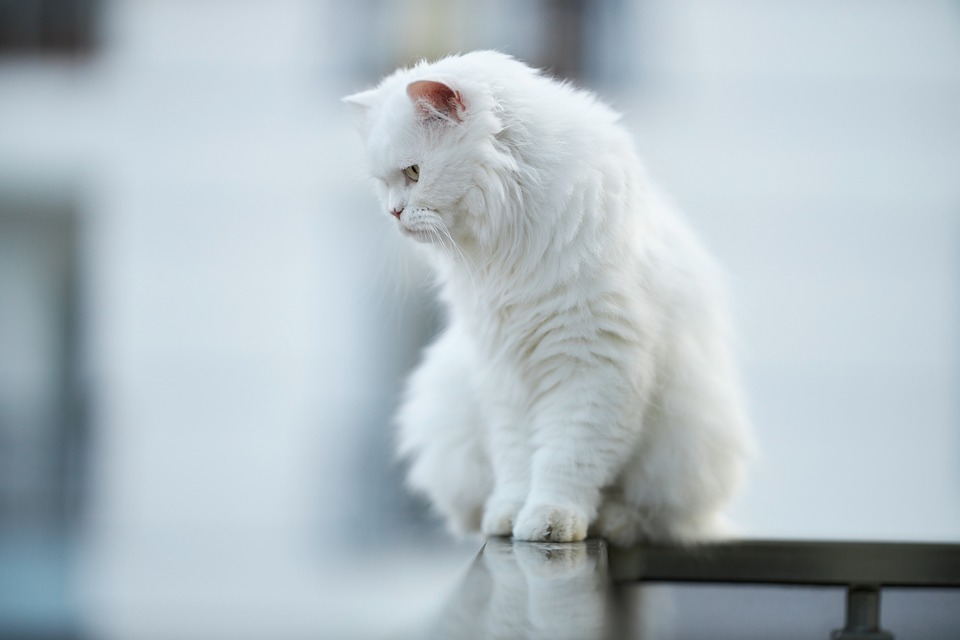As your beloved feline companion enters their golden years, it becomes crucial to provide them with a comfortable and supportive environment that caters to their unique needs. Aging cats often experience various health issues, such as arthritis, reduced mobility, and sensory decline. By making a few adjustments to their living space and lifestyle, you can ensure their well-being and help them enjoy their senior years to the fullest. In this article, we will explore some essential tips on creating a cozy and nurturing environment for your senior cat.
**1. Provide Easy Access to Essential Resources**
As cats age, they may find it challenging to reach their essential resources, such as food, water, litter boxes, and resting areas. Ensure these resources are easily accessible by placing them on the same level as your cat’s preferred resting spots. Consider using ramps or low-sided litter boxes to accommodate any mobility limitations.
**2. Create Comfortable Resting Areas**
Senior cats tend to spend more time resting and sleeping. Provide them with soft and supportive bedding options in warm and quiet areas of your home. Consider investing in orthopedic beds that offer extra cushioning for aging joints. Placing these beds away from drafts and high traffic areas will also help your senior cat relax and sleep undisturbed.
**3. Optimize the Environment for Mobility**
Arthritis and decreased mobility are common issues among senior cats. To assist them, make a few adjustments to their environment. Ensure litter boxes have low sides for easy entry and exit. Provide ramps or steps to help them access their favorite elevated spots, such as window perches or cat trees. Minimize the need for jumping by rearranging furniture or using pet stairs.
**4. Maintain a Consistent Routine**
Senior cats thrive on routine. Establish a consistent schedule for feeding, playtime, and other daily activities. Predictability and stability help reduce stress and anxiety in older cats. Stick to regular feeding times, and maintain the same location for their food and water bowls. By doing so, you can ensure your senior cat feels secure and comfortable in their environment.
**5. Enhance Environmental Enrichment**
Promote mental and physical stimulation for your senior cat by providing environmental enrichment. Offer interactive toys, scratching posts, and puzzle feeders to keep their minds engaged and bodies active. Rotate toys regularly to provide novelty and prevent boredom. Engaging your senior cat in play sessions can help maintain their cognitive function and overall well-being.
**FAQs about Creating a Comfortable and Supportive Environment for Senior Cats**
Q: How can I make my senior cat’s litter box more accessible?
A: Opt for litter boxes with low sides or cut down the entrance to make it easier for your senior cat to enter and exit. Additionally, consider placing litter boxes on each floor of your home to minimize the need for climbing stairs.
Q: What type of bedding is best for senior cats?
A: Orthopedic beds with memory foam or extra cushioning are ideal for senior cats. These beds provide support for aging joints and alleviate pressure points. Avoid beds with high sides that may be difficult for your cat to climb over.
Q: Is it necessary to provide ramps or steps for my senior cat?
A: If your senior cat struggles with reaching higher surfaces or jumps, providing ramps or steps can be beneficial. These aids help minimize joint stress and make it easier for your cat to access their favorite spots.
Q: Should I change my senior cat’s diet?
A: Consult with your veterinarian to determine if your senior cat’s dietary needs have changed. Older cats may require a diet formulated for their age and specific health conditions. Your vet will guide you in selecting the appropriate food to support your cat’s overall health.
Q: How can I ensure my senior cat receives enough mental stimulation?
A: Environmental enrichment is crucial for senior cats. Provide interactive toys, scratching posts, and puzzle feeders to keep their minds active. Play with your cat regularly to engage them in stimulating activities and maintain cognitive function.
Remember, creating a comfortable and supportive environment for your senior cat involves understanding their individual needs and making necessary adjustments. By implementing these tips, you can help your feline friend age gracefully and enjoy a high quality of life in their senior years.








